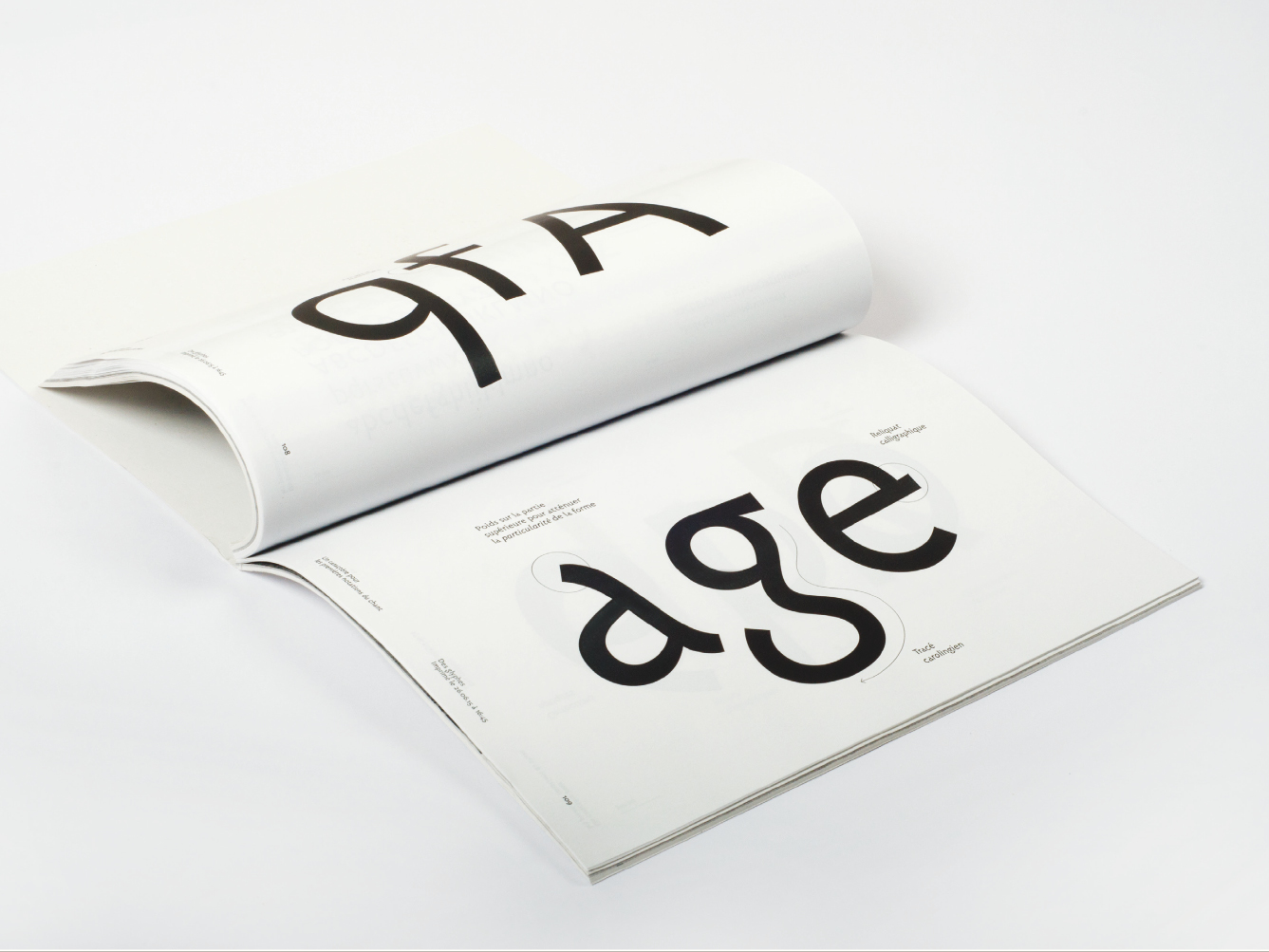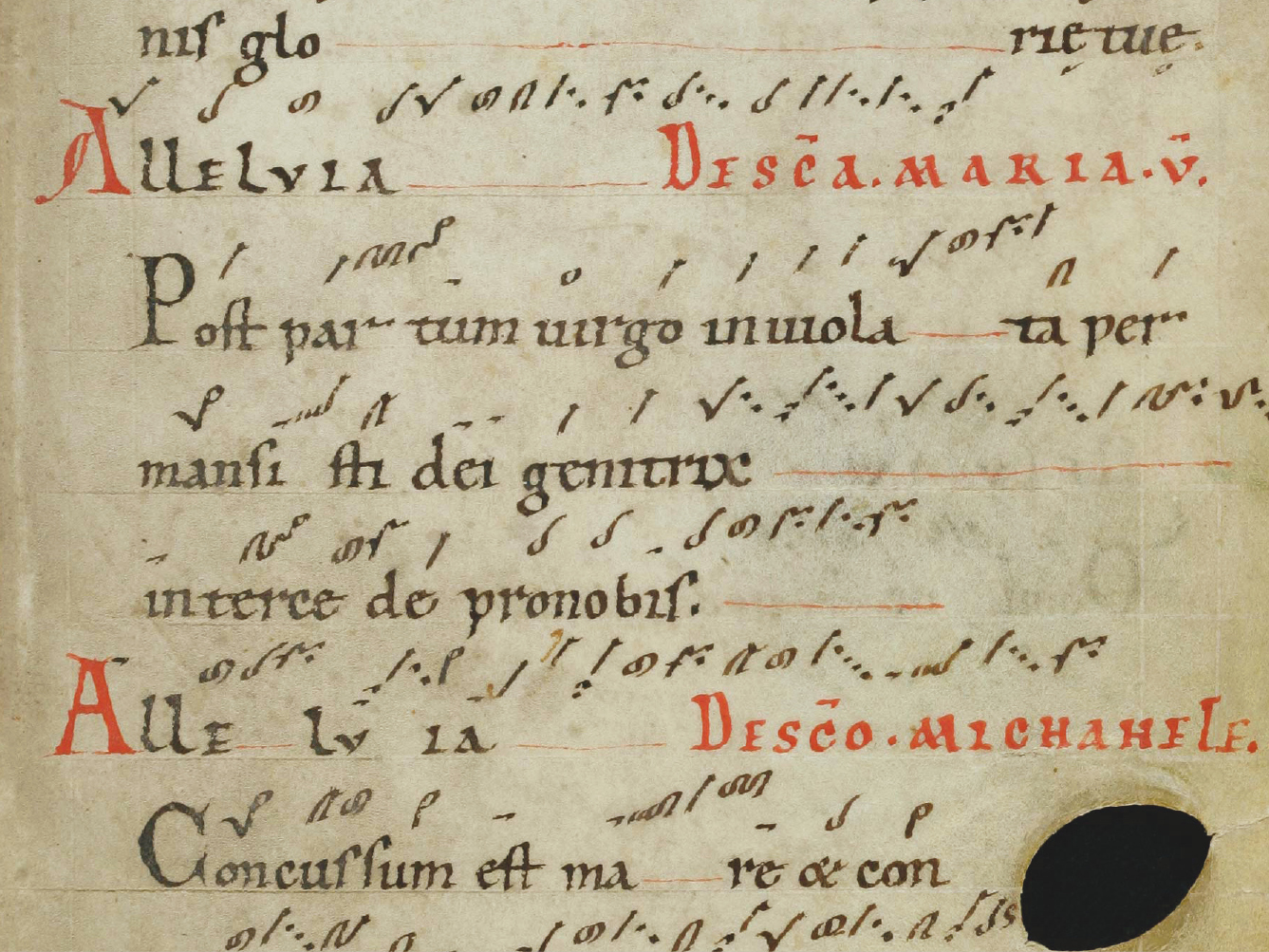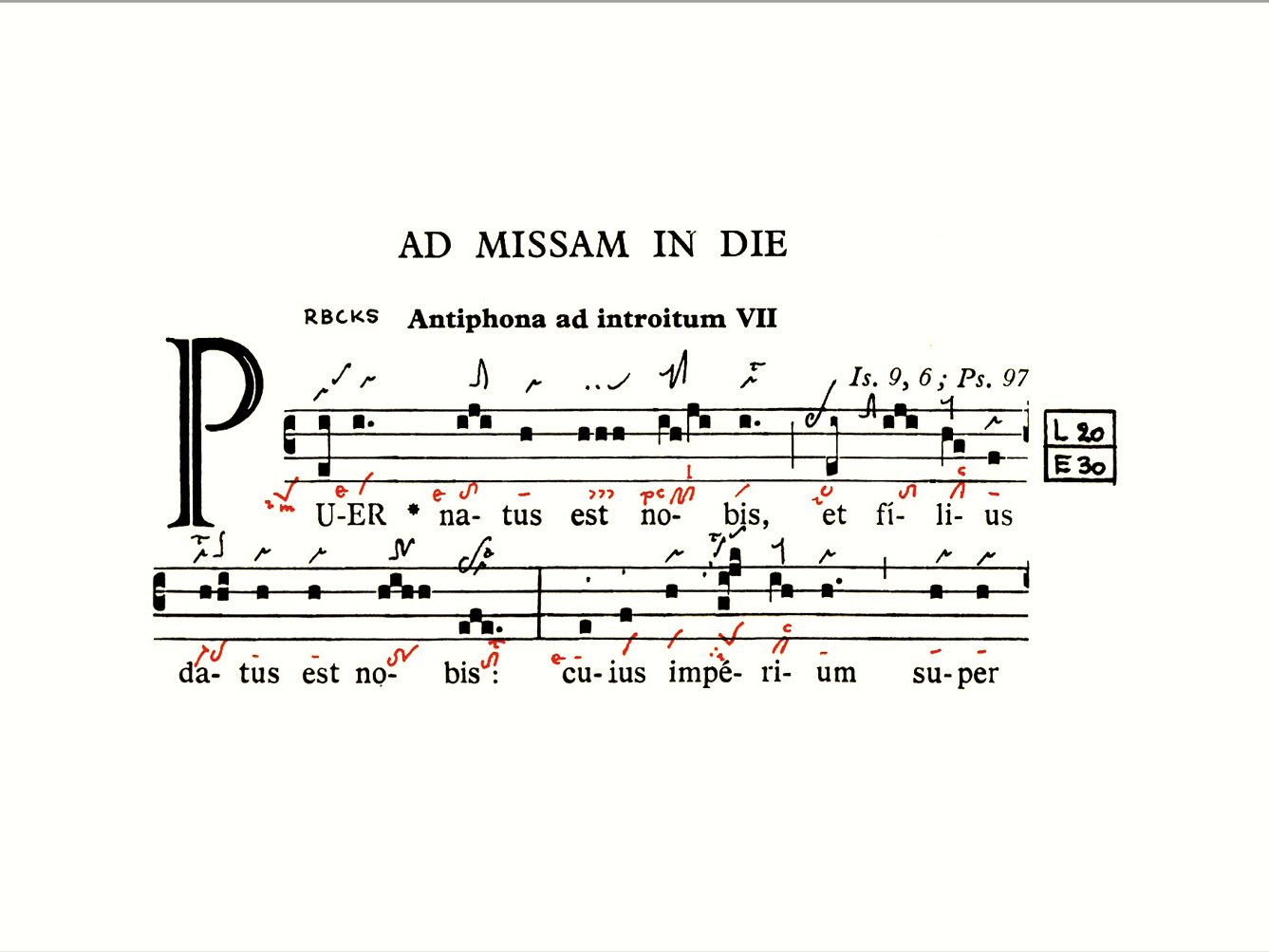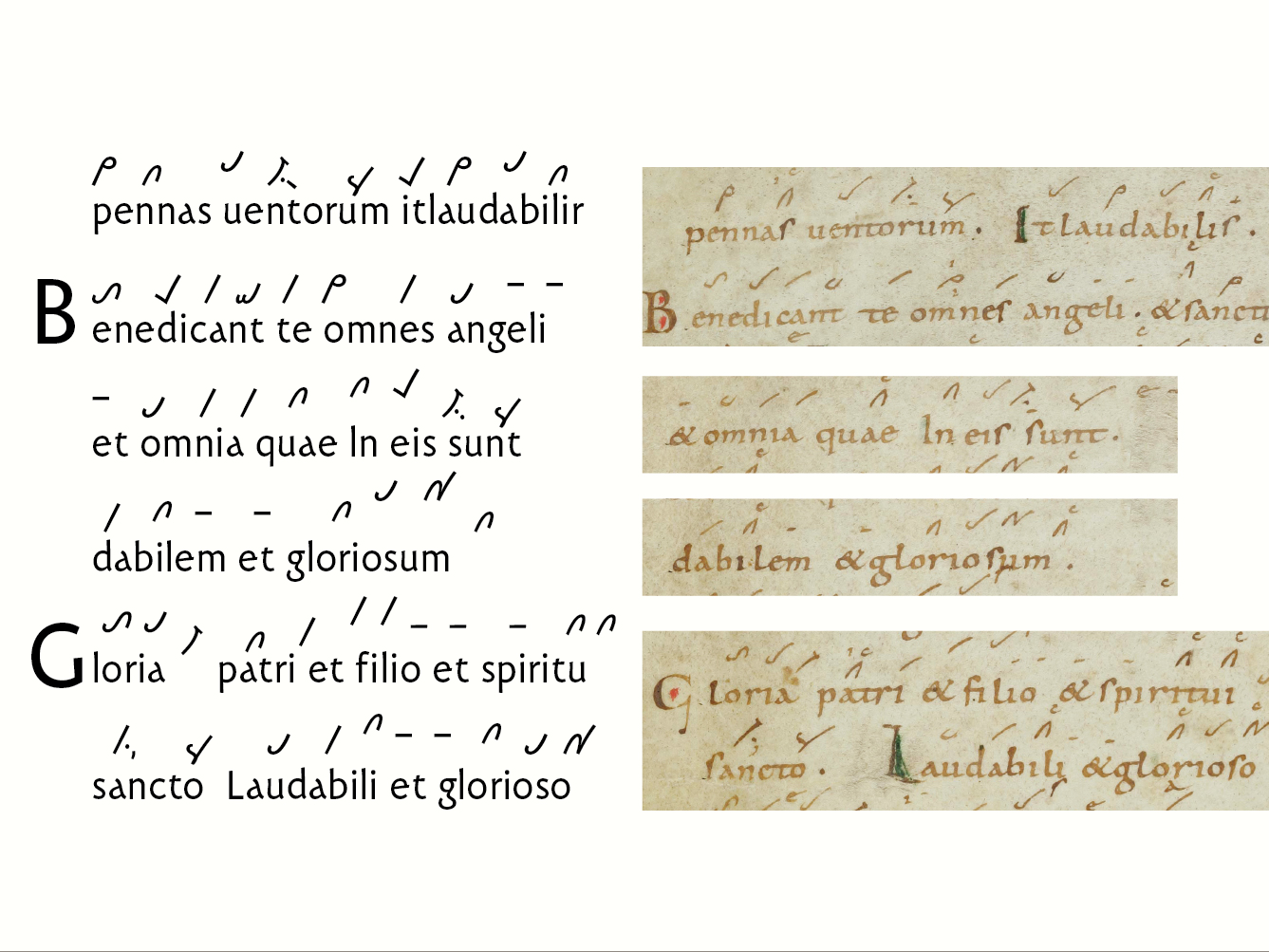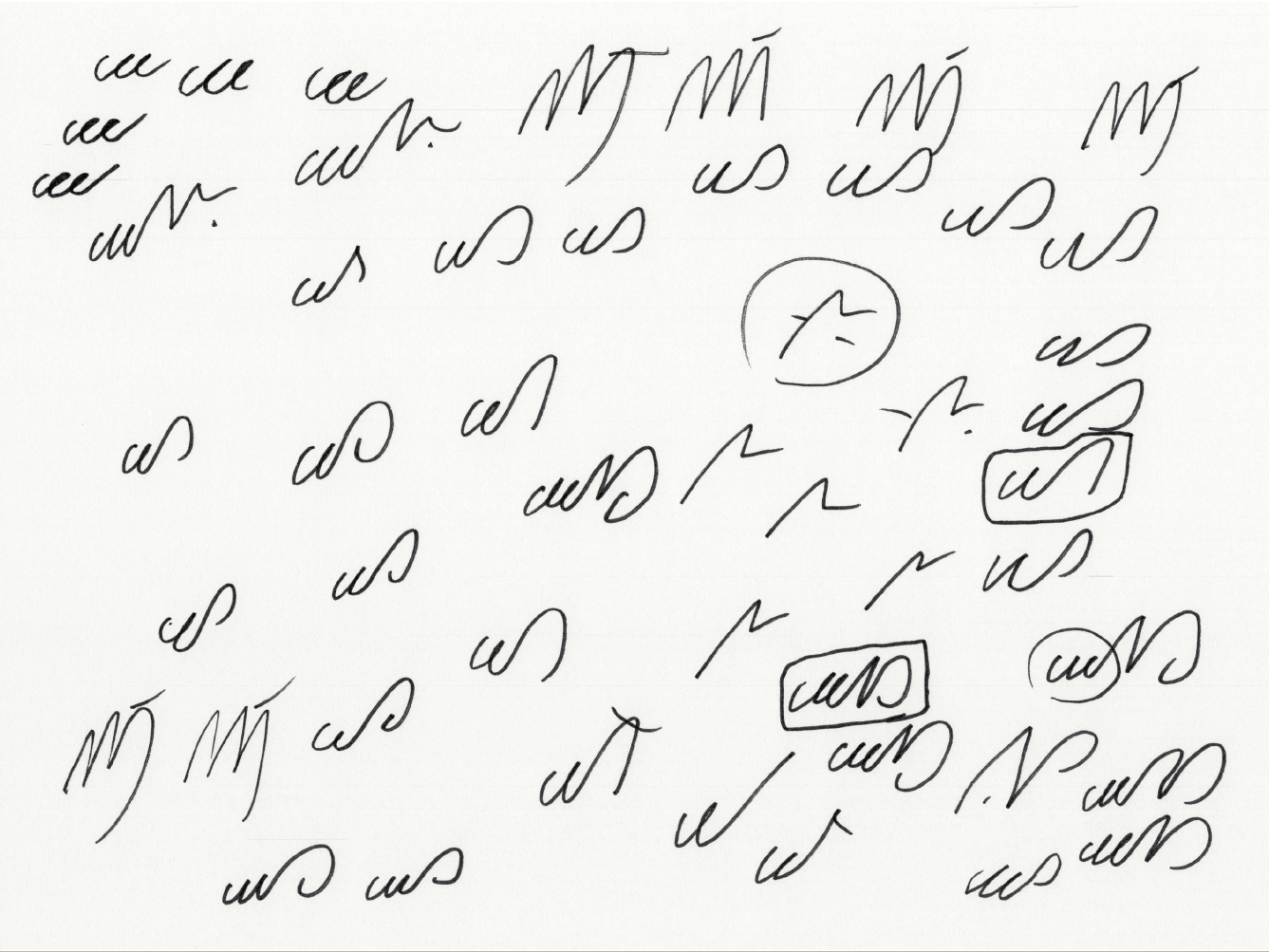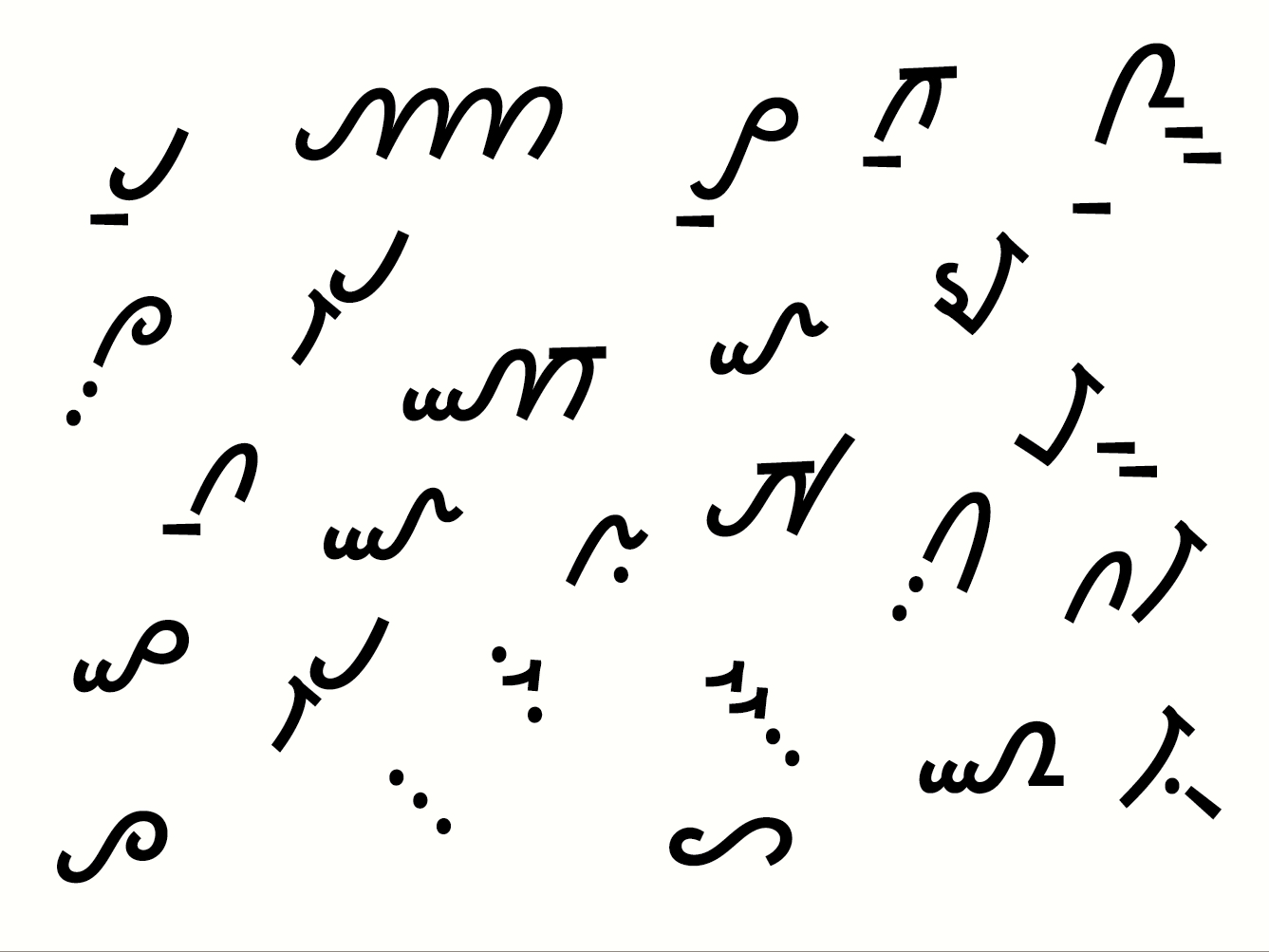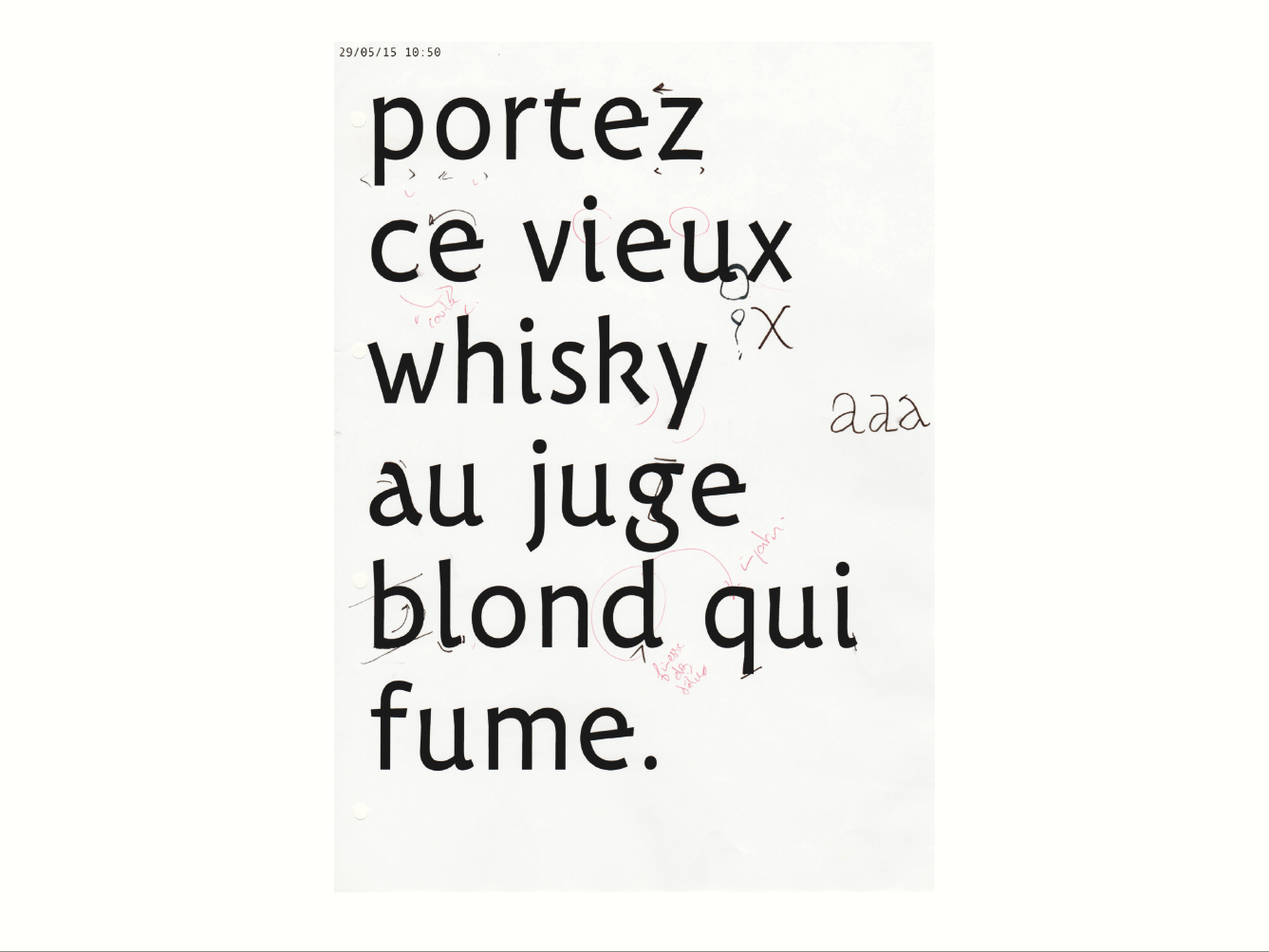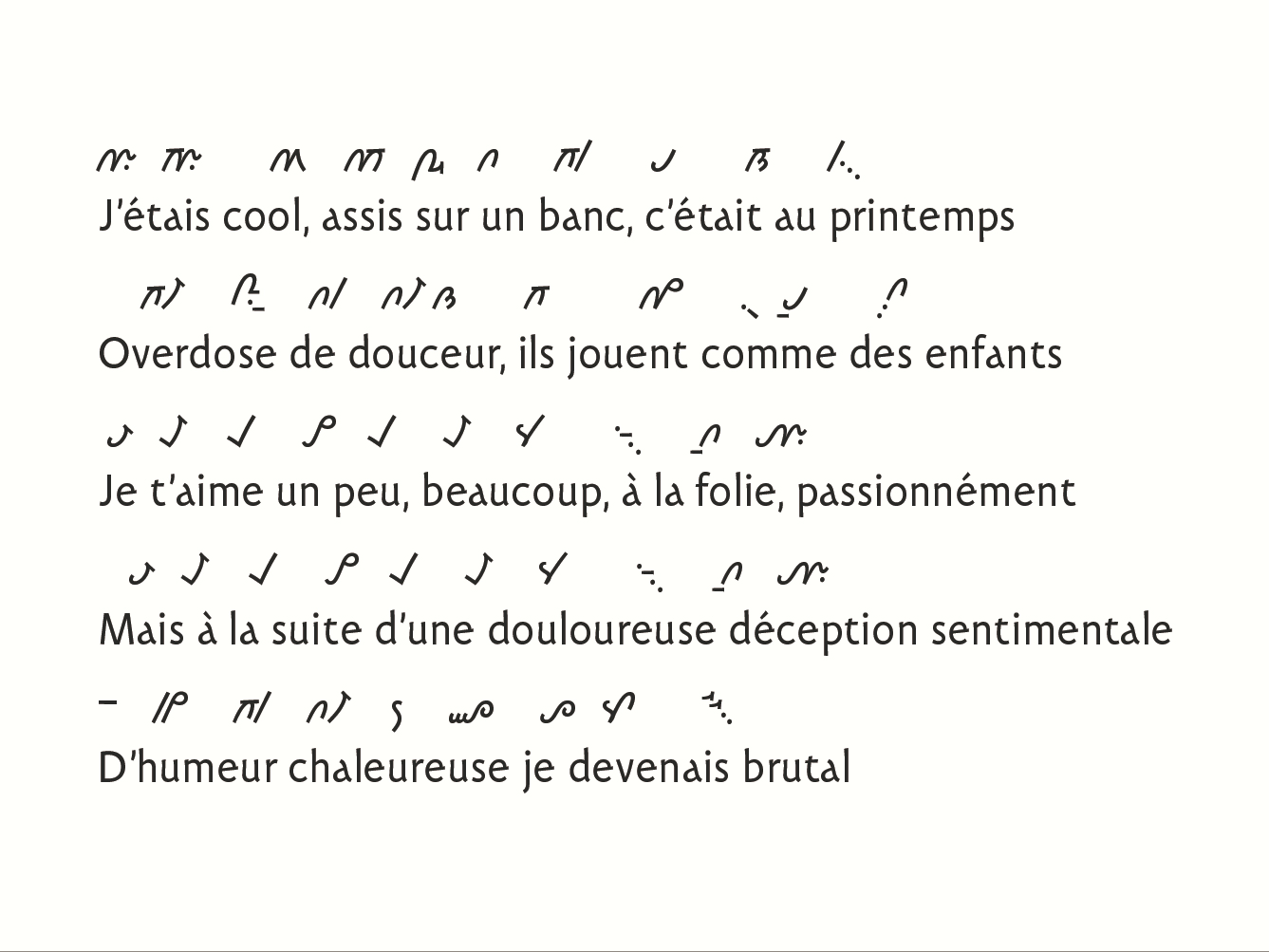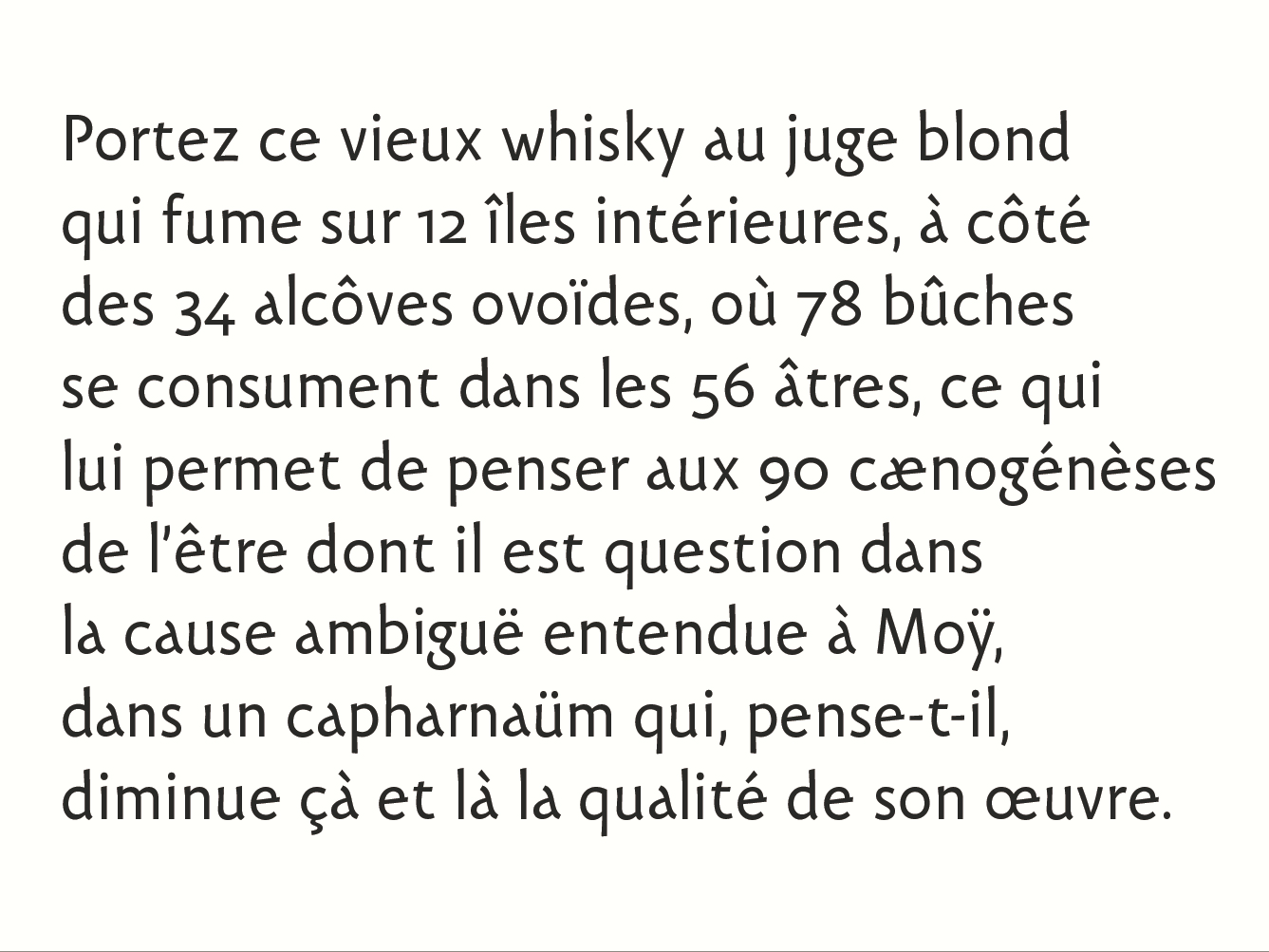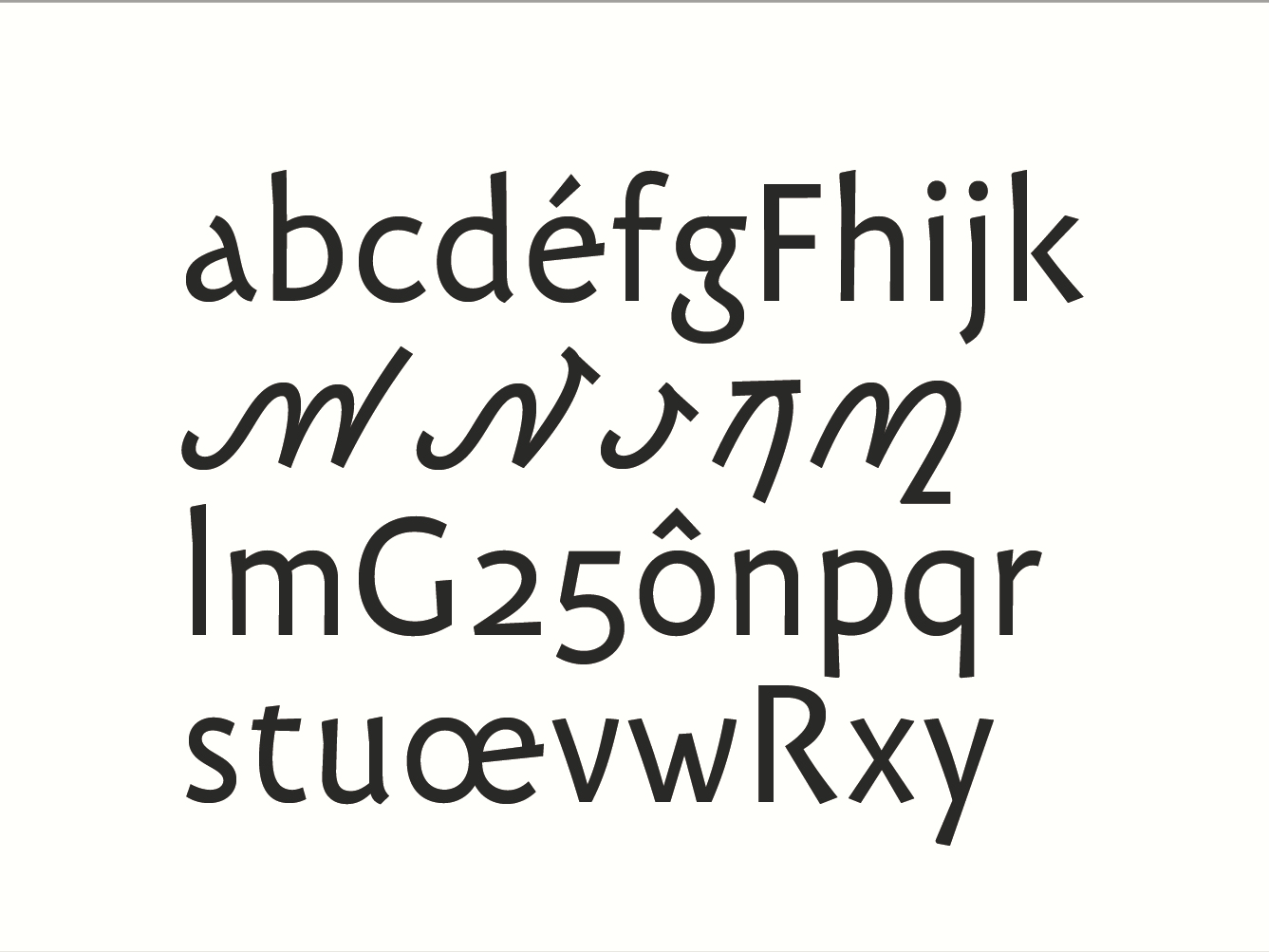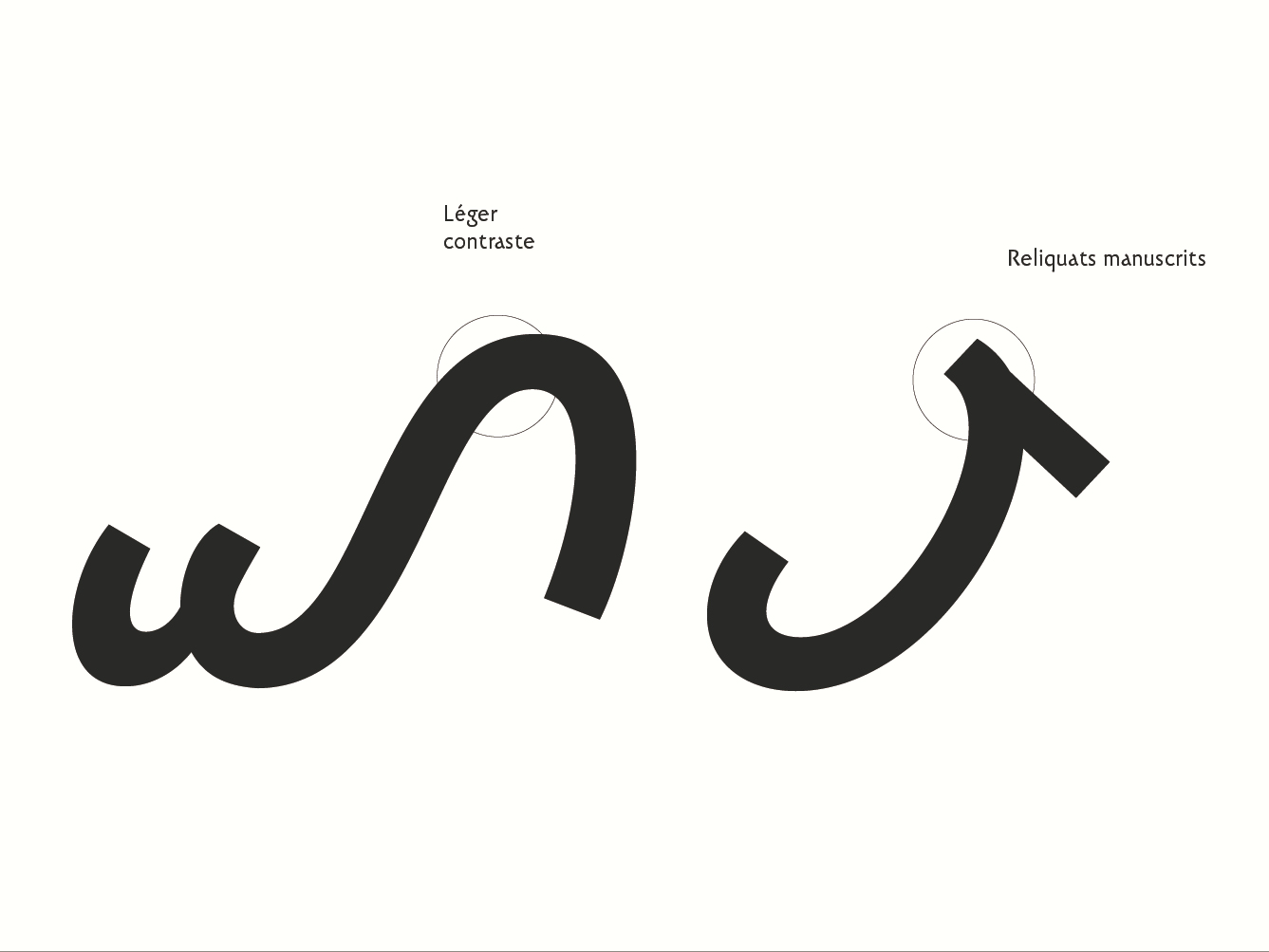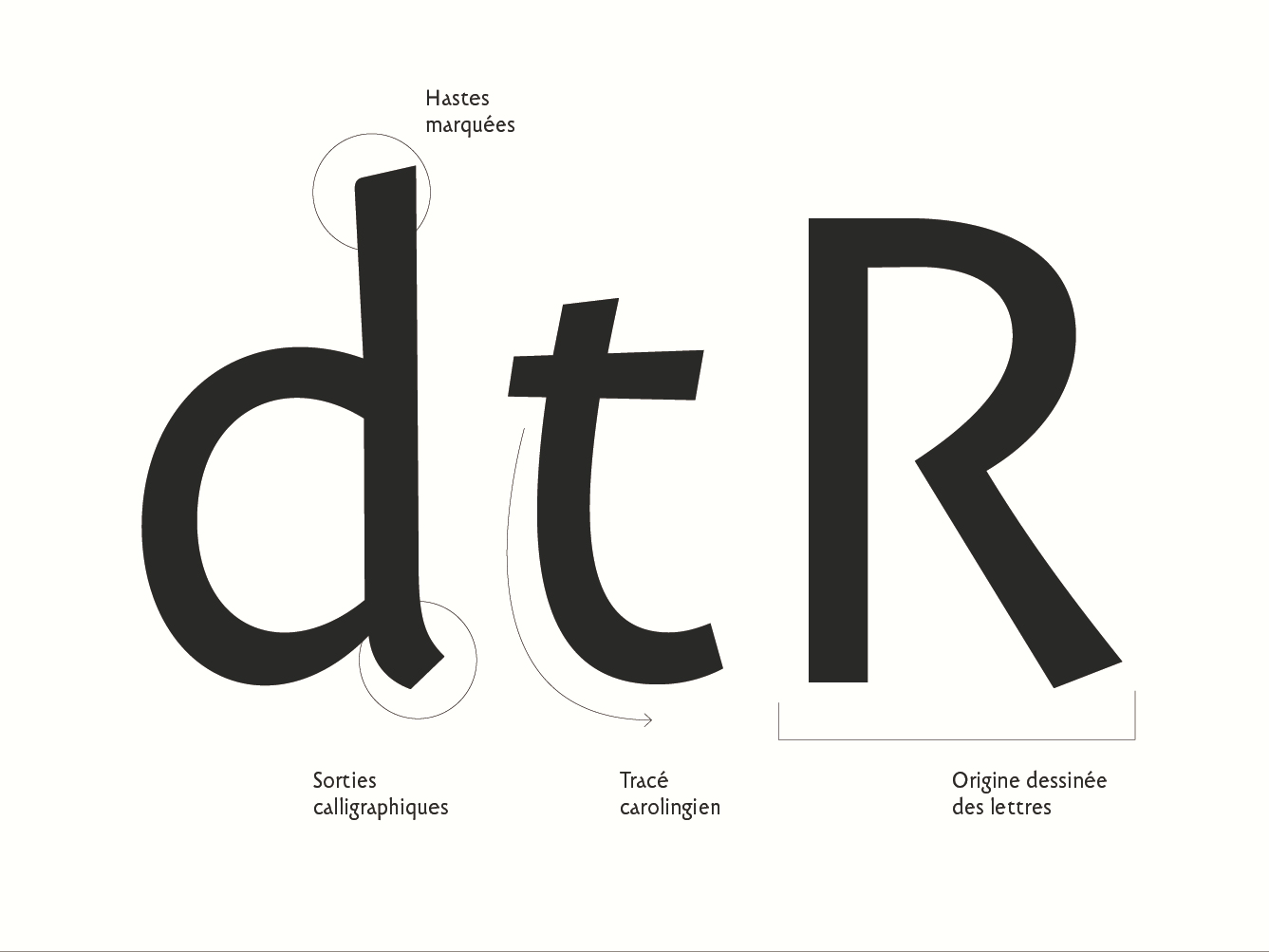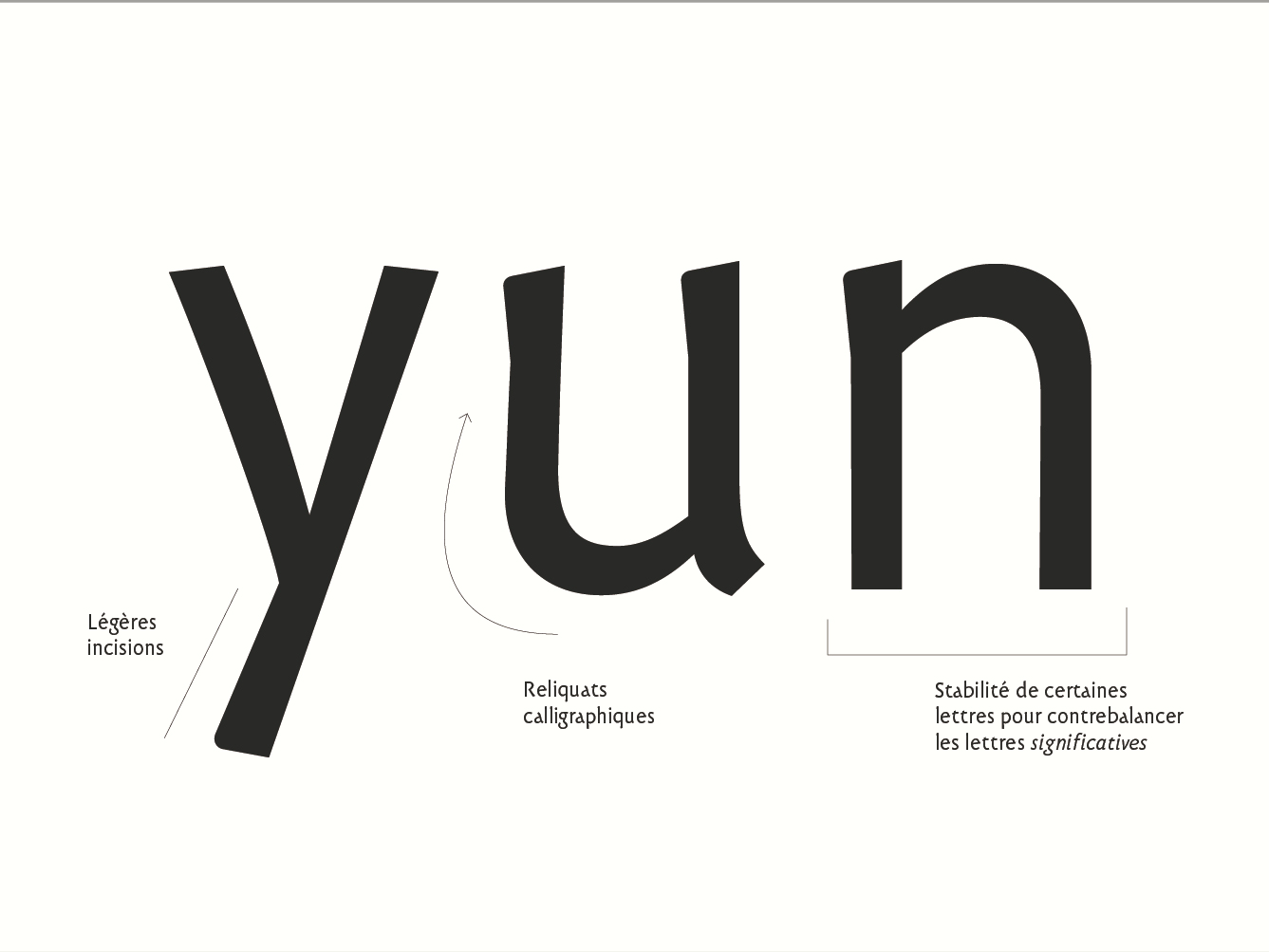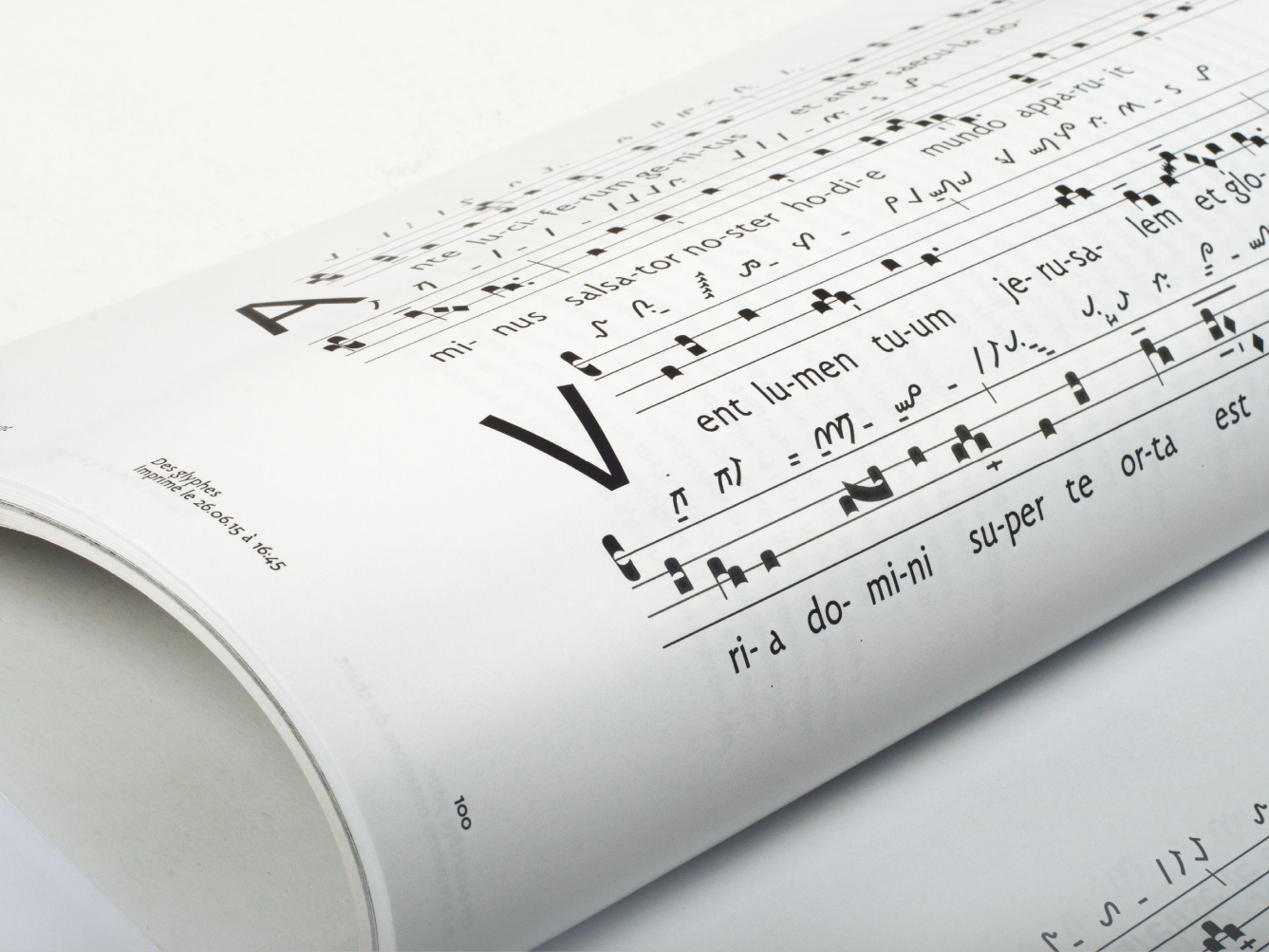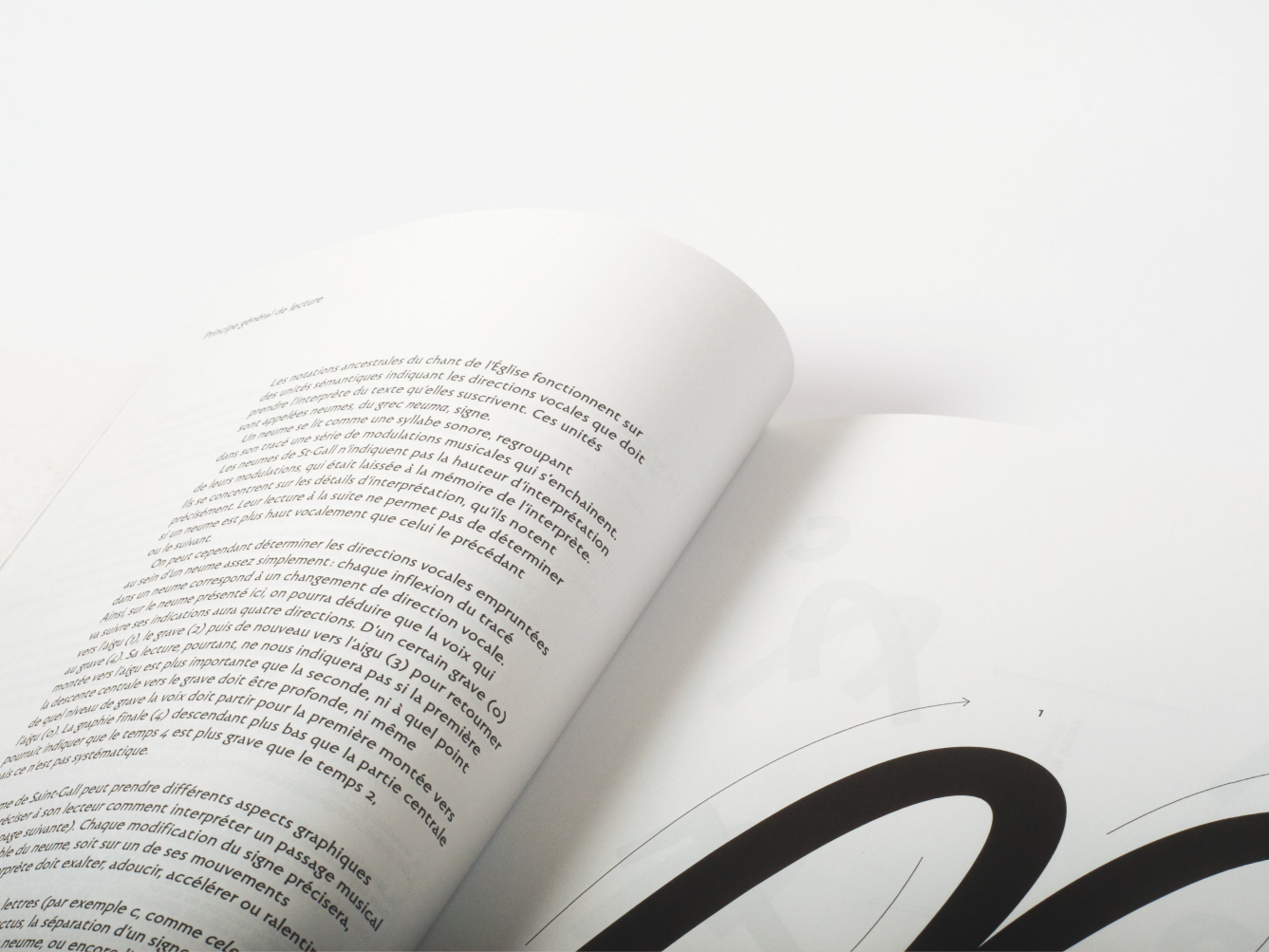A typeface for the first musical notations
Francis Ramel zoomThe emergence of early musical notations, which started from the eighth century onwards, ended a secular tradition of melodies’ learning based on word-of-mouth. From then on, various models of graphic transcription of the sound become favoured. The first musical notes written down on parchment – called neumes – will evolve over the centuries to become our modern system of musical notation. The graphic quality of the graduals created by the Carolingians scriptoria is striking.
Two scriptures particularly caught the attention of historians: the “Messine” writing and the writing of “St. Gall”. Those scriptures are still used today to interpret the Gregorian chant as faithfully as possible to its ancestral form. My graphical explorations were based on the observation of two manuscripts, which are considered as landmarks with regards to the study of early notation systems. They were also sustained by the work done by the developers of the Gregorio project, an open-source software whose objective is to enable the digital publication of partitions using Carolingian notation systems. The publication of such partitions is a typographical challenge. Indeed, they offer to their readers at least three different scripts to read simultaneously.
As well as facilitating the typesetting of the chant, the design of this typeface aims to facilitate the work of scientists by providing them with a tool for easily transcribing studied signs. The drawing process required going back and forth between the Carolingian sources identified and contemporary practices in musical writing. The result is a relatively informal drawing style for the neumes, which is reminiscent of handwriting, and a alphabet which is an interpretation of the ductus of the Carolingian minuscule. A kind of “carolineal” integrating some telltale features of the ductus of the Carolingian minuscule while seeking to remain stable, contemporary and readable. All produced glyphs can be displayed by Gregorio and be composed together in order to transcribe the chant correctly. The Roman typeface can also be used alone to compose texts of a reasonable length. Neumes and letters are sharing a “family likeness” although they are based on very different structures and energies. This research also investigates the issue of the origin of those scriptures and of a hypothetical graphical ancestor that they might share. Is is still an ongoing research. A watchful eye is focused on the writing system of tironian notes, in its heyday in the Middle Ages.
